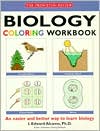At the end of my sophmore and junior years in high school, we were always reminded to start our science fair projects over the summer. Most of us laugh and balked at the idea of doing any actual work over the summer that was related to school. Reflecting back on the summer between my junior and senior years in high school, had I not done a lot of research and talking to scientists in the field, my project would have been a dismal bleep on the science fair radar instead of opening the door to a world of endless opportunities.
Experiences similar to mine are important to an adolescent or emerging adult as they try to define themselves in today's world. Even if the student does not go into the science field, this is the first practical experience they will receive into the adult world of projects and problem-solving. Here is my advice to parents and students, in middle school or high school, about beginning a research project.

- Research the topic. Start with the web and find topics and projects that interest the student. Narrow down to one particular topic and bring what you know to your local college library. Many librarians will be more than happy to assist students find relevant material. I have used college libraries since middle school because they carry a much broader collection. It would not hurt to browse the local library either.
- Keep a reflective journal. All scientists keep a journal as a requirement for the project. Why? What if you discovered something that no one else has seen yet? The research experiment must be reproducible in order for other researchers to test the reliability and validity of your work. The journal should also include research dates and experiment dates. Your journal acts as the evidence for the research paper and makes it easier for you to document your resources.
- Find a mentor. Without the help of my high school Physics and Chemistry teachers, I would not have met and spoken with so many experts that did the research behind the articles I had read. Learning Connections does offer mentor services for middle and high school science fair projects. Here is what we do:
- Make sure the project falls withing the guidelines of ISEF rules and regulations and assist with filling out paperwork.
- Guide the students to ensure best practices are being met concerning the scientific method.
- Proofread research paper and project board.
- Assist with resources and experts in the field to broaden student's understanding and depth of project.
- Prep students for judging.
Whew! That sounds like a lot of work, right? Let me tell you something, I went to my school's science fair with a project that discussed the effectiveness of suntan lotions. This is where I met my mentor in high school, Mr. Sheldon Smith. We were not talking about suntan lotions within ten minutes into the conversation but about the hole in the ozone layer and what I thought might be the problem! From there, I met scientists at Harvard and NASA-Langley and was attempting to make a less than 2 lb. laser to fly on a NASA-Wallops balloon. I was able to present my research at the State MIT Science Fair my senior year. What an experience! All it takes is one person to believe in you and what interests you to spur what has been one of my most memorable high school experiences. That alone can make the difference in your child's education!
Since then, our people at Learning Connections have worked on Scientific Review Committees, conducted Middle School Science Fairs, served as volunteers on Regional Science Fair Committees, mentored student projects, and judged numerous science fairs since 1996. If you have any questions, contact us through our Facebook page!
 You must be the change you want to see in the world.
You must be the change you want to see in the world.


 When one investigates the reasons why art and nature appeals to so many people, there are a variety of reasons. Ask yourself, what draws your eye into the picture? Is it just the colors? Lack of color? Is it the placement of the subject? Have you ever thought about the ratio and placement of what the artist is trying to convey?
When one investigates the reasons why art and nature appeals to so many people, there are a variety of reasons. Ask yourself, what draws your eye into the picture? Is it just the colors? Lack of color? Is it the placement of the subject? Have you ever thought about the ratio and placement of what the artist is trying to convey?

 Football games, cheerleading, music lessons - this is a busy time of the year for parents and their children. Many school systems will be releasing their Interim (or Progress) Reports within the next two weeks. Visit your child's school website for exactly when to expect these reports. While these are not the definitive grades for the first term, they can provide valuable information for parents and set the tone for the school year. Here are a few tips for parents on how to best handle the information:
Football games, cheerleading, music lessons - this is a busy time of the year for parents and their children. Many school systems will be releasing their Interim (or Progress) Reports within the next two weeks. Visit your child's school website for exactly when to expect these reports. While these are not the definitive grades for the first term, they can provide valuable information for parents and set the tone for the school year. Here are a few tips for parents on how to best handle the information:
 I absolutely adore this series from the Princeton Review! It's a great way to add more content to high school and college Biology classrooms! One page is a description of the biological process involving the picture that follows. What an outstanding way to connect verbal intelligence and spatial intelligence! There are many great web resources for coloring pages too! The nice thing about having it in this workbook is that you do not have to hunt for these materials online.
I absolutely adore this series from the Princeton Review! It's a great way to add more content to high school and college Biology classrooms! One page is a description of the biological process involving the picture that follows. What an outstanding way to connect verbal intelligence and spatial intelligence! There are many great web resources for coloring pages too! The nice thing about having it in this workbook is that you do not have to hunt for these materials online. 


